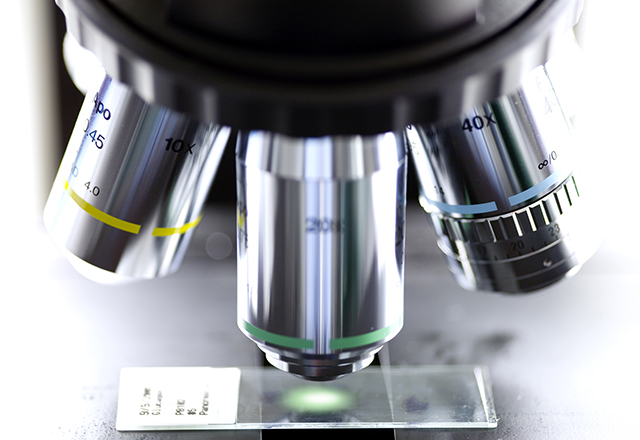The definition of life has long been under constant debate within the life sciences. The more we push the boundaries of knowledge and explore our planet, the more difficult it becomes to reach a consensus. While some defend the idea that living organisms are those exhibiting basic metabolism, others argue that the ability to reproduce — either independently or by exploiting the metabolism of another life form — is essential.
The classification of the simplest life forms remains under debate, with candidates ranked either by cell size or by the number of genes encoded in their DNA. Some define bacteria as the simplest life forms today, with Carsonella ruddii often cited as a prime example, possessing a genome of only 182 genes and residing at the frontier between a symbiotic bacterium and an organelle [1]. However, because this symbiont requires a host to survive, other bacterial candidates with larger genomes that also have the ability to grow in laboratory conditions, such as the marine bacterium Pelagibacter ubique, with a genome of fewer than 1,400 genes, are also considered [2].
This issue becomes even more complex when considering viruses and viroids as parasitic life forms. These entities are often defined as “molecular complexes” specialized in hijacking host metabolism to replicate themselves. The simplest virus known is the hepatitis Delta virus, with only one open reading frame and a genome of 1.7 kilobases. It is a satellite virus that depends on the co-infection with hepatitis B virus [3].
Recently, the definition of life has been challenged again with the discovery of obelisks. Obelisks are RNA entities found within bacteria, sharing similarities with viroid particles. These molecules consist of circular RNA containing ribozymes and encoding a protein called Oblin [4]. Obelisks were discovered using an advanced RNA-seq screening setup involving database homology analysis, RNA folding predictions and quantification of ribozyme content in RNA sequences. They have been found in bacteria from the oral and gut microbiomes, as well as in marine ecosystems [5].
The team of Ivan Zheludev found that their target obelisk in Streptococcus sanguinis was nonessential for bacterial survival, with no observed differences in bacterial growth in liquid media with or without the obelisk. These results open questions about the importance, ecology and effect the presence of these RNA entities can have in bacteria. Interestingly, when examining the bacterial CRISPR library, the researchers found no evidence of obelisk sequences, complicating efforts to characterize obelisks as bacterial infective agents [4].
The presence of obelisks in bacteria in the human microbiome also invites new questions, as we don’t know yet to what extent these RNA entities could be influencing bacteria metabolism. Zheludev’s work did not show differences in bacteria growth in liquid media under very controlled conditions; however, the potential influence of obelisks on bacterial ecology and their interactions with other members of the human microbiome remains unknown.
If the importance of obelisks in bacterial metabolic processes can be demonstrated, new avenues for probiotic treatments could emerge. Instead of targeting specific bacterial taxa associated with health or disease [6,7,8], future strategies might focus on modulating the abundance of obelisks within the microbiome.
The discovery of obelisks across both marine and human-associated ecosystems expands our understanding of the complexity and diversity of RNA-based life forms. It raises fundamental questions about the legacy of the RNA world and highlights the potential for previously overlooked sequences playing significant roles in microbial ecology. Moreover, the presence of obelisks in the human microbiome suggests new lines of inquiry into how such RNA elements may influence bacterial physiology, interactions and human health. As RNA-sequencing databases continue to grow at an unprecedented rate, the systematic exploration of these data promises to uncover further unknown dimensions of the microbial world, challenging our current definitions of life and reshaping our approach to microbiome research and biotechnology.
References:
- Mizutani M, Fujikawa T, Fukatsu T, Kakizawa S. (2025). Complete genome of the mutualistic symbiont “Candidatus Carsonella ruddii” from a Japanese island strain of the Asian citrus psyllid Diaphorina citri. Microbiol Resour Announc 14:e01082-24. https://doi.org/10.1128/mra.01082-24
- KEEG website for Candidatus Pelagibacter ubique HTCC1062. Available at: https://www.kegg.jp/kegg-bin/show_organism?org=pub
- Huang, C. R., & Lo, S. J. (2010). Evolution and diversity of the human hepatitis d virus genome. Advances in bioinformatics, 323654. https://doi.org/10.1155/2010/323654
- Zheludev, I. N., Edgar, R. C., Lopez-Galiano, M. J., de la Peña, M., Babaian, A., Bhatt, A. S., & Fire, A. Z. (2024). Viroid-like colonists of human microbiomes. Cell, 187(23), 6521–6536.e18. https://doi.org/10.1016/j.cell.2024.09.033
- López-Simón, J., de la Peña, M., & Martínez-García, M. (2025). Viroid-like "obelisk" agents are widespread in the ocean and exceed the abundance of RNA viruses in the prokaryotic fraction. The ISME journal, 19(1), wraf033. https://doi.org/10.1093/ismejo/wraf033
- Geng, J., Ni, Q., Sun, W., Li, L., & Feng, X. (2022). The links between gut microbiota and obesity and obesity related diseases. Biomedicine & pharmacotherapy = Biomedecine & pharmacotherapie, 147, 112678. https://doi.org/10.1016/j.biopha.2022.112678
- Hartmann, P., Seebauer, C. T., & Schnabl, B. (2015). Alcoholic liver disease: the gut microbiome and liver cross talk. Alcoholism, clinical and experimental research, 39(5), 763–775. https://doi.org/10.1111/acer.12704
- Xiong, R. G., Li, J., Cheng, J., Zhou, D. D., Wu, S. X., Huang, S. Y., Saimaiti, A., Yang, Z. J., Gan, R. Y., & Li, H. B. (2023). The Role of Gut Microbiota in Anxiety, Depression, and Other Mental Disorders as Well as the Protective Effects of Dietary Components. Nutrients, 15(14), 3258. https://doi.org/10.3390/nu15143258
Related Content
- Underappreciated, Not Unimportant: Fungal Infections and Antifungal Resistance
- Genome Engineering Emerges from the Shadows
Want to read more from the Johns Hopkins School of Medicine? Subscribe to the Biomedical Odyssey blog and receive new posts directly in your inbox.
